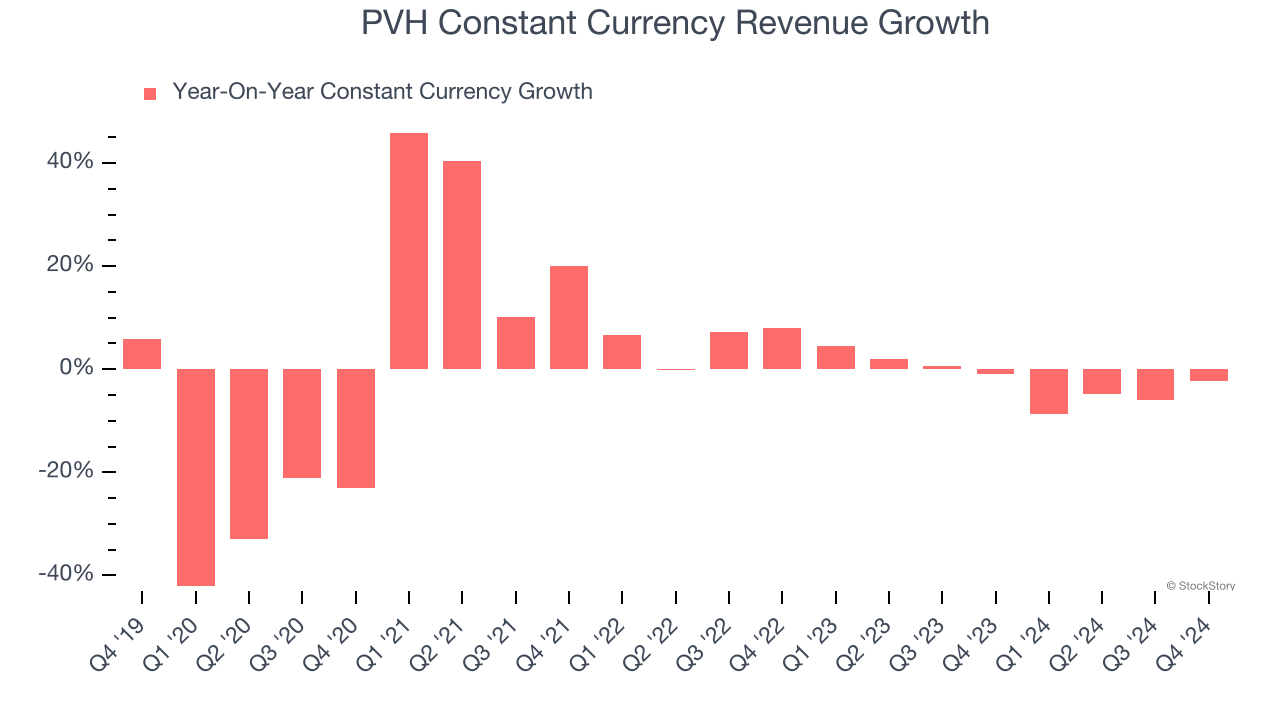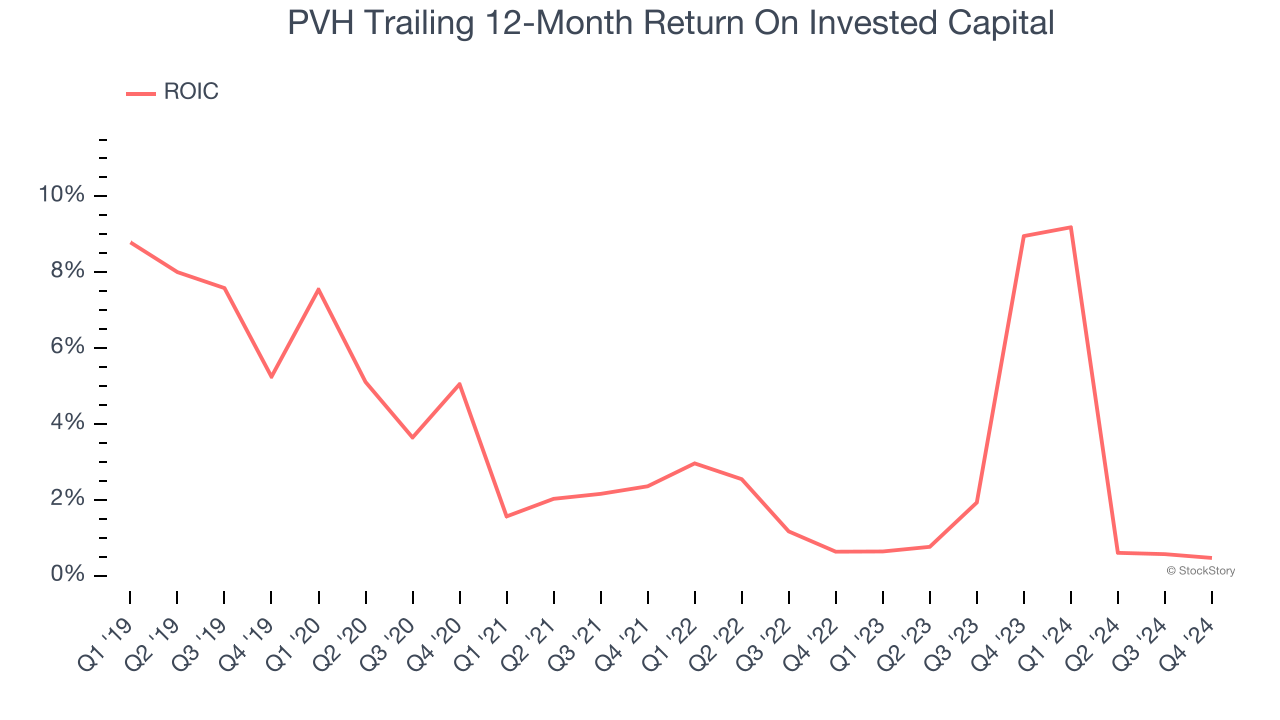
Over the past six months, PVH’s stock price fell to $86.30. Shareholders have lost 12.5% of their capital, disappointing when considering the S&P 500 was flat. This may have investors wondering how to approach the situation.
Is there a buying opportunity in PVH, or does it present a risk to your portfolio? Get the full stock story straight from our expert analysts, it’s free.
Why Do We Think PVH Will Underperform?
Even though the stock has become cheaper, we don't have much confidence in PVH. Here are three reasons why you should be careful with PVH and a stock we'd rather own.
1. Declining Constant Currency Revenue, Demand Takes a Hit
Investors interested in Apparel and Accessories companies should track constant currency revenue in addition to reported revenue. This metric excludes currency movements, which are outside of PVH’s control and are not indicative of underlying demand.
Over the last two years, PVH’s constant currency revenue averaged 2% year-on-year declines. This performance was underwhelming and implies there may be increasing competition or market saturation. It also suggests PVH might have to lower prices or invest in product improvements to accelerate growth, factors that can hinder near-term profitability. 
2. Projected Revenue Growth Shows Limited Upside
Forecasted revenues by Wall Street analysts signal a company’s potential. Predictions may not always be accurate, but accelerating growth typically boosts valuation multiples and stock prices while slowing growth does the opposite.
Over the next 12 months, sell-side analysts expect PVH’s revenue to stall. Although this projection suggests its newer products and services will spur better top-line performance, it is still below average for the sector.
3. Previous Growth Initiatives Haven’t Impressed
Growth gives us insight into a company’s long-term potential, but how capital-efficient was that growth? A company’s ROIC explains this by showing how much operating profit it makes compared to the money it has raised (debt and equity).
PVH historically did a mediocre job investing in profitable growth initiatives. Its five-year average ROIC was 3.5%, lower than the typical cost of capital (how much it costs to raise money) for consumer discretionary companies.

Final Judgment
We cheer for all companies serving everyday consumers, but in the case of PVH, we’ll be cheering from the sidelines. Following the recent decline, the stock trades at 7.6× forward P/E (or $86.30 per share). While this valuation is optically cheap, the potential downside is huge given its shaky fundamentals. There are better stocks to buy right now. We’d recommend looking at a top digital advertising platform riding the creator economy.
Stocks We Like More Than PVH
Donald Trump’s victory in the 2024 U.S. Presidential Election sent major indices to all-time highs, but stocks have retraced as investors debate the health of the economy and the potential impact of tariffs.
While this leaves much uncertainty around 2025, a few companies are poised for long-term gains regardless of the political or macroeconomic climate, like our Top 5 Growth Stocks for this month. This is a curated list of our High Quality stocks that have generated a market-beating return of 176% over the last five years.
Stocks that made our list in 2020 include now familiar names such as Nvidia (+1,545% between March 2020 and March 2025) as well as under-the-radar businesses like the once-micro-cap company Kadant (+351% five-year return). Find your next big winner with StockStory today.

